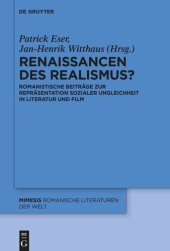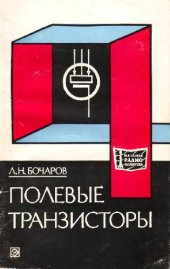
Ebook: How collages reveal your deepest thoughts: A guide to consumers' minds : A guide to consumers' minds
Author: Philipp Pachler
- Tags: Consumer behavior., Brand name products., BUS058000, NON000000, NON000000
- Year: 2013
- Publisher: Diplomica Verlag
- City: Hamburg, GERMANY
- Edition: 1
- Language: English
- pdf
A deeper understanding of how consumers think, feel and act is vital to the success of management and provides valuable information for managerial decision making in many areas of business. One key to this understanding is brand knowledge, which is the representation of a brand in consumers’ minds. Unfortunately, a substantial amount of relevant knowledge within people’s minds is unconscious and cannot be retrieved, accessed and recalled by consumers. As a consequence, certain methods of retrieval are required, such as projective techniques. The method this book works with is the collage technique, an expressive projective method. The aim of this book is to create a multi-layered approach that facilitates the interpretation of collages without the need of any additional information given by the participants, based on metaphor analysis, color theory, a communication model and structural analysis. Auszug aus dem Text Text Sample: Capter 2.1, Assumptions on brand knowledge representation: 2.1.1, It is all about representations: Accessing and retrieving brand knowledge provides valuable information for understanding consumer behavior in marketing (Christensen & Olson, 2002; Keller, 2003). To be able to access and retrieve brand knowledge, it is important to find out how consumers process and store information. When people experience their environment, neurons (nerve cells) in the brain change (Tulving, 2007). This change of neurons forms mental representations, which retain the experience and make it available for later retrieval (Tulving, 2007); this process of forming permanent representations is called encoding (Hasselmo, 2007). A representation is a type of code that determines how elements are expressed in a certain system (Kosslyn, 1994). Representations are unique to every situation and individual and structure people’s behaviors (Rose, 2007). Knowledge and experiences are encoded and stored as experience-dependent representations in human brains, constituting memory (Dudai, 2007). Memory is the representation of past experiences lasting over time (Schacter, 2007), or in a broader sense the capacity to encode, store and retrieve information (Tulving, 2000). Representations make sense of people’s everyday lives and are perceived as truth or fantasy, science or commonsense and conveyed via speech, art, television, dreams and so on (Rose, 2007). In short, mental representations display how brand knowledge is organized in memory (Hutchinson & Eisenstein, 2008). The question of how consumers represent information mentally and how behavior is affected is not completely solved yet and still considered a problem in neuroscience (Paivio, 1986; Kosslyn, 1994; Dudai, 2007). To provide a better understanding of representations and information processing, the next section elaborates on different forms of consumer memory. 2.1.2, Consumer memory: Memory is more than simply a record of our past; it is the controller of all human behavior, including speech, cognition and knowledge (Mantonakis, Whittlesea, & Yoon, 2008). Memory consists of multiple dissociable brain systems capable of changing behavior, emotion and thought based on experiences (Squire, 1987; Johnson, 2007). The human memory system can be distinguished in terms of conceptual structures, types of content, types of processes and brain structures (Johnson, 2007). The long-term memory is divided into declarative and procedural memory (Cohen & Squire, 1980). The declarative memory contains memories consciously acquired and stores all that we have learned about the world. The procedural memory contains skills and abilities acquired unconsciously (Cohen & Squire, 1980). Declarative knowledge is reflected in information that is retrieved consciously, whereas procedural knowledge is reflected in cognitive acts, which are retrieved unconsciously (Wyer, 2008; Cohen & Squire, 1980). The explicit and implicit memory is similar to the declarative and procedural memory, and is about the role of consciousness in performance (Mantonakis, Whittlesea, & Yoon, 2008). Schacter (1987) explained that explicit memory was the conscious acquisition and recall of information in the past, while implicit memory referred to performing tasks based on past experiences not consciously recalled. The declarative memory is divided further into semantic and episodic memory (Tulving, 2002). Semantic memory receives and stores context-free and abstract knowledge such as words and verbal symbols, and their meanings and relations and does not require effort to recall (Tulving, 1972, 2002). Episodic memory contains context-related and event-related information about past experiences and their relations and requires conscious recollection (Tulving, 1972, 2002; Mantonakis et al., 2008). Representations in episodic memory are mainly stored in terms of interrelated stories (Wyer, 2008) that can be described by spatial and temporal attributes (Tulving, 1972). Individuals have the potential for unlimited storage of episodic memory that can additionally be easily retrieved, since everyday experiences are immediately and temporarily stored in the hippocampus and then transferred to a long-term storage in the neocortex (Swap, Leonard, Shields, & Abrams, 1991). Knowledge and experiences people possess are represented in different modalities in their minds; much knowledge is coded verbally, but a large portion is nonverbal (Wyer & Radvansky, 1999; Woodside, 2004). Beyond that, verbal representations, such as words, phrases, numbers and facts, as well as nonverbal representations, such as images, maps and feelings, both function at a conscious and unconscious level (Paivio, 1986). This is due to the fact that memory is based upon two different thinking styles: rational thinking including analytical, deliberate and verbal processes, and experiential thinking involving intuitive, narrative and nonverbal processes (Epstein, 1994). Experiential thinking forms images, metaphors and narratives, while rational thinking encodes reality in symbols, words and numbers (Epstein, 1994). The specific thinking styles lead to different information processing (Epstein, 1994), which results in different aspects of brand knowledge in each memory system (Rolls, 2007). Some contain more verbal and conscious information, such as semantic, explicit and declarative memory and others more nonverbal and unconscious data, such as episodic, implicit and procedural memory (Cohen & Squire, 1980; Schacter, 1987; Tulving, 2002). As a consequence, different methods for retrieval are required (Woodside, 2004, 2006) which are discussed in section 2.3. But first different theories of brand knowledge representations are outlined. 2.1.3, Brand knowledge structures: A major theory of brand knowledge in consumer research is the associative network theory also known as the associative memory model (Anderson & Bower, 1973). This model assumes that knowledge is organized in networks of nodes which create certain knowledge structures (Henderson, Iacobucci & Calder, 2002). Nodes are units of information that are activated by processing data or by activation of linked nodes (Keller, 1993) and can include verbal descriptions, visual representations, sensory or emotional impressions (Supphellen, 2000). This theory has especially been adopted by the semantic/episodic view of memory (Mantonakis et al., 2008). Keller (1993) based his model of brand knowledge on associative network theory and conceptualized brand knowledge as ,a brand node in memory to which a variety of associations are linked’ (Keller, 1993, p. 3). In general, Keller (2003) defined brand knowledge in terms of ,the personal meaning about a brand stored in consumer memory, that is, all descriptive and evaluative brand-related information’ (p. 596). Keller (1993) determined two major components of brand knowledge: brand awareness and brand image. Brand awareness is the ability ,to identify a brand under different conditions’ (Keller, 1993, p. 3) and consists of brand recognition and brand recall. Brand image is the ,perception about a brand as reflected by the brand associations held in consumer memory’ (Keller, 1993, p. 3). The types of brand associations (attributes, benefits or attitudes) differ along the dimensions of favorability, strength and uniqueness. The content and structure of brand knowledge influence what comes to mind when customers think about a brand, and therefore impacts the power of a brand and the effectiveness of marketing strategies (Keller, 1993, 2009). Aaker (1991) based his model of brand equity on the associative memory model. Brand knowledge forms the basis of brand equity (Keller, 2003) and is the value added or subtracted by assets and liabilities linked to a brand (Aaker, 1991). In other words, brand equity is ,the differential effect of brand knowledge on consumer response to the marketing of the brand’ (Keller, 1993, p. 8). Aaker (1991) determined brand awareness, brand associations, perceived quality, and brand loyalty as the dimensions of brand equity. Earlier research (Aaker, 1991; Keller, 1993) focused more on verbal (as opposed to nonverbal) representations in associative networks and emphasized brand knowledge largely consisting of semantic memory. It neglects nonverbal and unconscious information found in other memory systems, such as episodic memory (Tulving, 1972). In recent years, there has been a shift from tangible and product-related information to more abstract, intangible and product-unrelated aspects (Keller, 2009). It is no longer only about facts linked to a brand, but about thoughts, feelings, perceptions, images and experiences that form associative networks in consumer memory (Keller, 2009). Despite this shift, these models still rely on the associative network theory, which emphasizes information that is conscious and readily available, neglecting most unconscious information (Anderson & Bower, 1973). Moreover this model focuses on information in nodes per se and ignores structure and links between them (Christensen & Olson, 2002). A second theory of representation of brand knowledge is the means-end chain theory (Gutman, 1982). This model links attributes of products and brands to consequences which hold particular personal value. The consequences provide valuable benefits for consumers leading to a choice of products and brands based upon certain attributes (Gutman, 1982). Although this approach focuses more on structure, it does not provide much information on content, as structure only determines how the content is organized and not its implicit meaning (Christensen & Olson, 2002). Biographische Informationen Philipp Pachler was born in Brixlegg, Austria, in 1987. He graduated from the Leopold-Franzens-University Innsbruck in 2010 and has a specialization in Marketing.The author studied one year abroad at Tulane University in New Orleans, Louisiana. He further pursued marketing internships with D. Swarovski in Wattens, Austria, and the Hoerbiger Corporation in Houston, Texas. Presently,the author works as a consultant at The Boston Consulting Group in Vienna, Austria.
Download the book How collages reveal your deepest thoughts: A guide to consumers' minds : A guide to consumers' minds for free or read online
Continue reading on any device:

Last viewed books
Related books
{related-news}
Comments (0)








